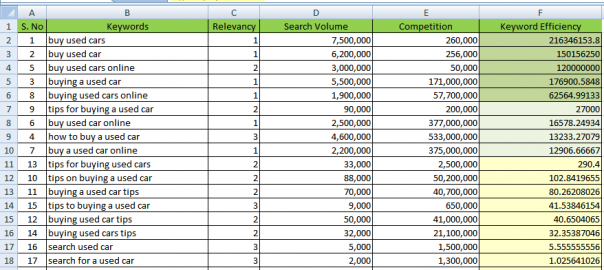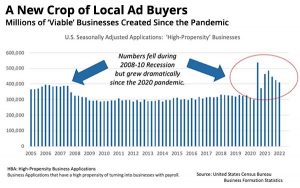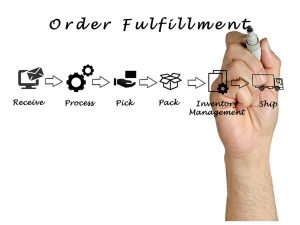Keywords had always been an important part of the research process for copywriters, even before search engines came into existence. Keyword research is an essential step in building a website that gets decent traffic. It’s also necessary for gaining a better understanding of your niche and target audience. With thorough keyword research, you’ll develop better insight into resources that can promote the success of your business.

There is a multitude of keywords available, so it can be difficult to narrow down the terms that would be most effective for your website. For help with your research, you need to study keyword efficiency indexing (KEI) and its role in your search engine ranking. In this article, I’ve described precisely how you can use KEI for finding the best keywords and optimizing your site’s content.
What is Keyword Efficiency Indexing?
KEI also called the Keyword Efficiency Index or Keyword Effectiveness Index, is an important index in the field of search engine optimization. It forms a criterion for measuring the effectiveness of certain keywords. It’s a mathematical comparison between the number of searchers (demand) for a particular keyword and the number of pages in the index of a search engine (supply) or so-called competition. Through keyword efficiency indexing, you can conduct statistical analysis of the keyword phrases that would be most successful on your page.
Benefits of Keyword Efficiency Indexing
The concept of KEI has helped many SEO experts and webmasters in choosing useful keywords. Here are a few ways you can benefit from using KEI for optimizing your site:
- KEI helps you identify keywords that are most effective in generating traffic. Then, you can remove the ineffective search terms and replace them with keywords that are more likely to generate organic traffic easily.
- The keyword with higher KEI will assist you in pinpointing your real competitors – those who have optimized their pages with the keywords you plan to use.
- By using KEI, you’ll be able to get traffic that’s more relevant to your niche. You’ll be able to draw in visitors who are genuinely interested in your content or products. It means that you’ll likely accomplish a lower bounce rate and higher user engagement, thus boosting your overall site performance.
How to Use Keyword Efficiency Indexing
There are some ways to calculate and interpret the KEI score. Although the process can be a bit complicated, keyword efficiency indexing can provide valuable insights on your keyword data if calculated correctly. The most popular formula for calculating KEI is A^2/E. Here A indicates the number of searches during a given period, whereas E shows the number of search results for the particular query.
The ideal scenario to look at when selecting your keyword is “high demand and low competition. Regarding keyword efficiency indexing, the higher the KEI, the better chance you have to get the keyword rank on SERP.
Let’s take a look at an example of how this KEI formula can be implemented by using the Google Keyword Planner tool. Imagine there are three keywords:
- Flowers in Los Angeles
- Florist in Los Angeles
- Flower Shop in Los Angeles
Add the terms to Keyword Planner and set the location to the United States.

Hit “Enter” to download the analysis sheet.

As you can see, the keywords are very close searches and highly competitive. Now, find out the number of search results for each keyword. Add the figure to an Excel spreadsheet.

The best keyword for the campaign is “Flower Shop in Los Angeles” with a KEI of 4.65.
Some people also do a reverse calculation for keyword efficiency indexing, which means that the formula will look like this:
KEI = E/A^2
When the reverse calculation for KEI is implemented, the ideal score is not the same as mentioned earlier. In fact, the opposite is true in this case. A lower KEI indicates a higher popularity and less competition.
The primary aim of calculating the KEI is to get the ratio of keyword demand and the number of search results or competition. It helps you to find a more efficient keyword. However, people sometimes take the formula as:
KEI = (P^2/C)
In this variation, P indicates the popularity of a particular search term and C indicates the competition. It’s recommended that you adapt the potential of P at times because extremely popular search terms may score too high in efficiency based on the above formula alone. That’s because there’s an exponential growth in the numerator while the denominator only grows linearly.
To come up with a more accurate result for KEI, you’ll also need to quantify the competition based on some criteria. Here are a few:
- A number of sites that turn up in a regular search.
- A number of sites that come in a phrase search, i.e. using quotation marks.
- A number of sites in which the term is used in the page title.
Do we measure these thresholds? Do we factor in the website’s pure technical level? If so, to what extent? The bad news is that no exact rule of thumb will work for everyone. Therefore, the best way to get more appropriate data for keyword efficiency indexing is by self-experimenting.
KEI is a time-honored formula that has served its original purpose till date. The main reason for this is that it ensures novice marketers or SEO optimizers can use highly competitive keywords with the right amount of caution. Through keyword efficiency indexing, many newbies have been able to work successfully their way up from using primary keywords in the most popular search terms.
Wrapping It Up
You now have a good idea of how to use keyword efficiency indexing. All you need to do is filter the results and choose the right keywords you should use for optimization. I suggest that you export the results into a spreadsheet and sort the keywords based on their KEI score. You don’t need many keywords to optimize your website, so you’ll just need to classify them into three groups.
The first group will comprise your primary keywords, which are the top five keywords in the list. Highlight them in green to signify their importance because it’ll be much easier for you to identify them later. Your next group will have 30 more keywords after the first five. This second group of keywords should be marked as important by highlighting them in yellow. The third group should have around 60 or 65 more keywords from the list. These are your supplemental keywords and can be highlighted in red or any other color of your choosing.
The idea is to prioritize on the first group of keywords and optimize your content using them with a keyword density of 2-3% max. You can also spread some of the yellow-marked keywords across your content, but never use too much, or you’ll find over-optimization issues. The third group of keywords can be used just in case you need more relevant keyword terms. Below is an example of shortlisted keywords where primary keywords are marked green, important ones are marked a lighter shade of green, and the backup keywords are marked in yellow:

Having a list of popular keywords is useful, but it’s not enough. Conducting keyword efficiency indexing requires you to dig deeper and be more precise. It means that you’ll need to identify the level of competition for your list of keywords so that you make the right choices. KEI will help you gain an in-depth understanding of what kind of competition you’re facing with certain keywords.
If you’re confused about keyword efficiency indexing, please leave a comment below. I’d love to help you out.
Digital & Social Articles on Business 2 Community(64)







